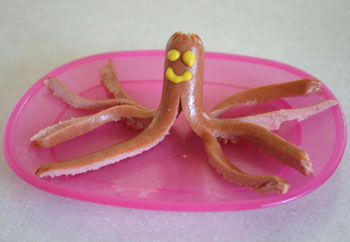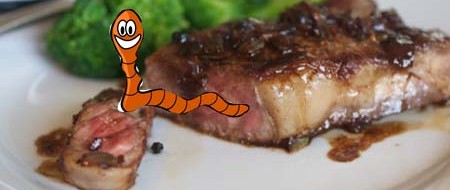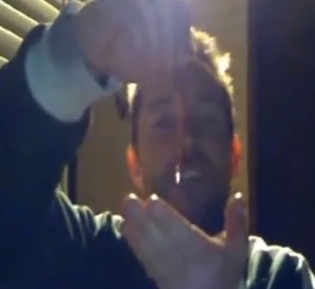If people dare you to eat a slug, don’t.
 It could turn out quite badly.
It could turn out quite badly.
I try not to be prescribtive and just tell people about risks and let them make their own decisions, but in this case, don’t eat slugs (those are slugs going after my basil in Kansas, below).
Health officials in Hawaii are warning residents and visitors to avoid slugs, snails, and rats after the US Center for Disease Control (CDC) found that three travellers visiting the state were recently infected with rat lungworm disease. One visitor got the disease because the individual ate a slug.
The notice, issued late last month, warns people to inspect produce and wash fruit and vegetables that could have small slugs or snails. These gastropods get the rat lungworm parasite (also known as an Angiostrongylus Infection) by eating rat faeces, and rats eat the infected slugs and snails, forming a continuous vile circle. Sometimes, humans get looped in by eating an uncooked snail. Once the parasite has infected a host, it can move to the brain and cause a type of meningitis, and eventually lead to death. There is not a treatment for rat lungworm disease, according to the CDC.
 The recent Hawaii health department notice states that it does inform travellers visiting Hawaii about the disease through signage, but acknowledges it needs to do better. “We recognise that there is more work to be done in educating residents and visitors and making sure they know how to prevent the spread of this disease,” the notice reads.
The recent Hawaii health department notice states that it does inform travellers visiting Hawaii about the disease through signage, but acknowledges it needs to do better. “We recognise that there is more work to be done in educating residents and visitors and making sure they know how to prevent the spread of this disease,” the notice reads.






 that the insect’s “head, eyes, and wings are visible. Insect is black in color, over 1-inch long.”
that the insect’s “head, eyes, and wings are visible. Insect is black in color, over 1-inch long.” summoned the restaurant manager and protested.
summoned the restaurant manager and protested. handle, Drizzt1 hangs out on the official fan message boards on the Avs’ website.
handle, Drizzt1 hangs out on the official fan message boards on the Avs’ website. and baked beans. Where’s the protein?”
and baked beans. Where’s the protein?”